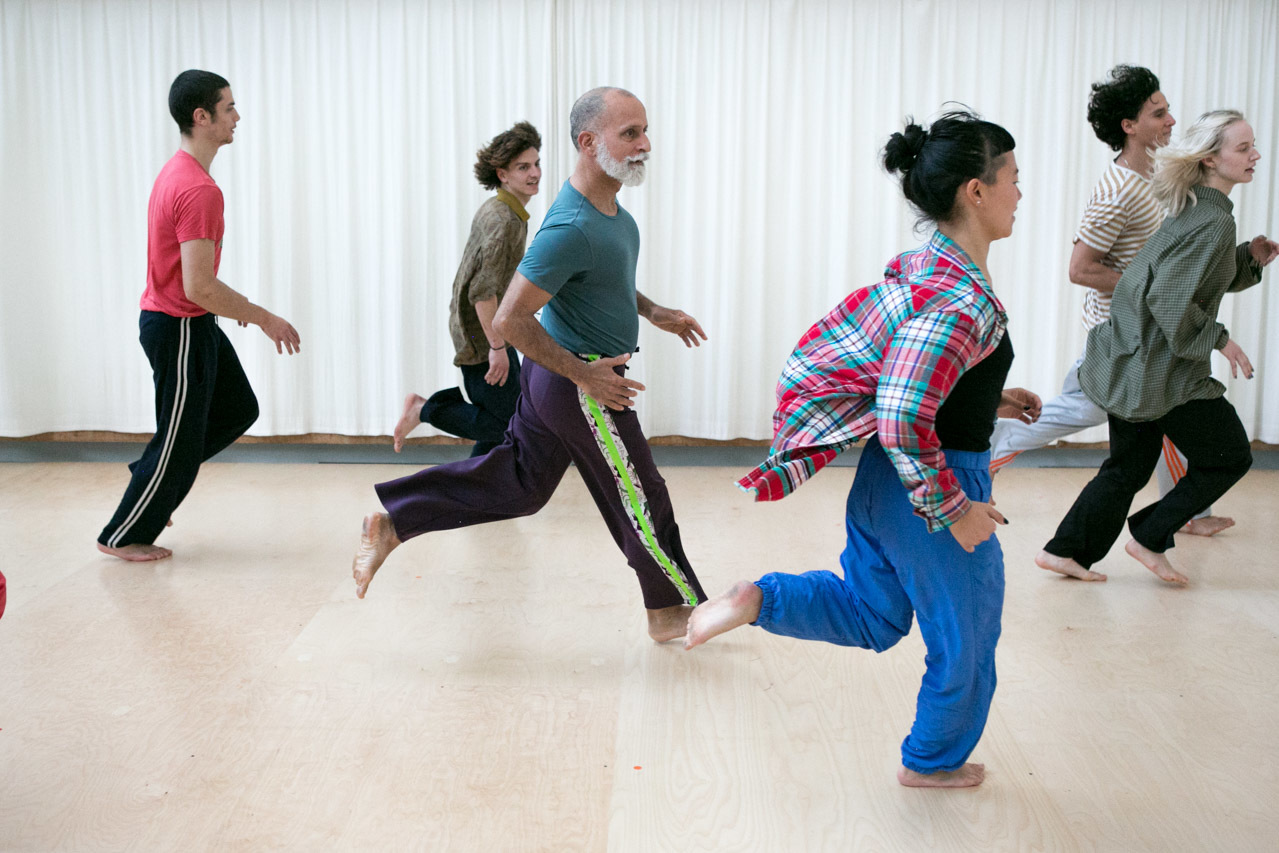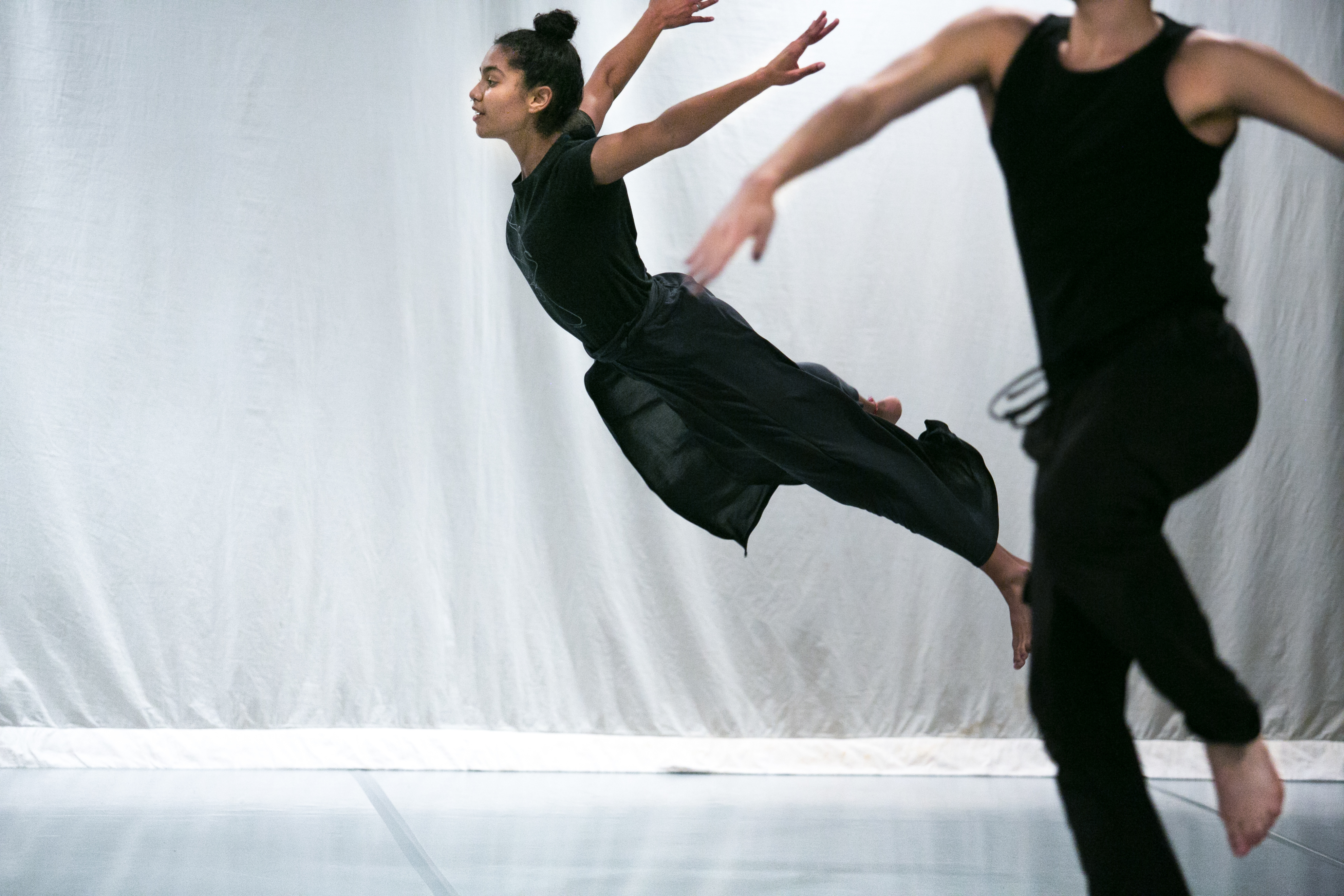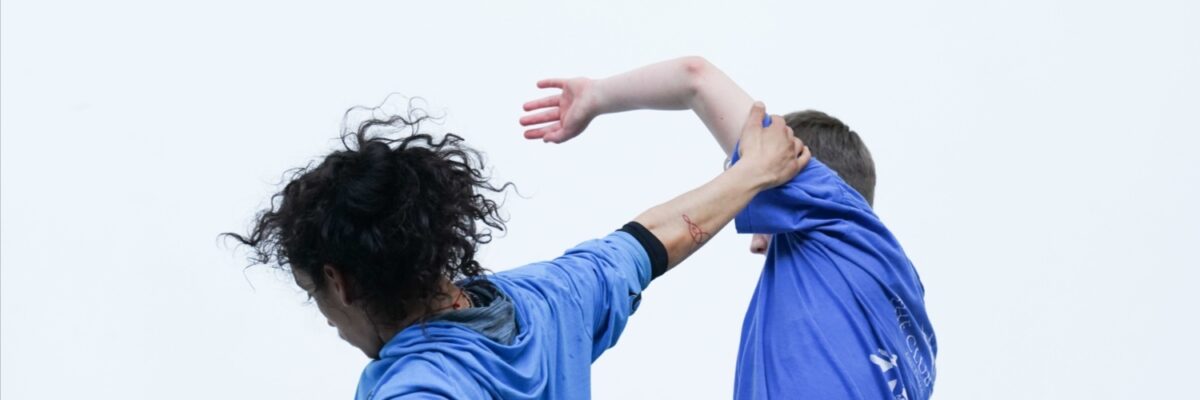Overview courses:
Improvisation & composition I (1st year) - 5 ECTS
Improvisation & composition II (2nd year) - 5 ECTS
Improvisation & composition III (option)(2nd year) - 5 ECTS
Artistic practice I (1st year ) - 4 ECTS
Artistic practice II (2nd year) - 4 ECTS
Artistic practice - guest choreographer (option) (2nd year) - 4 ECTS
Artistic practice III (partly optional) (3rd year) - 10-12 ECTS
Repertoire I (1st year) - 5 ECTS
Repertoire II (2nd year) - 4 ECTS
Repertoire III (option) (2nd year) - 4 ECTS
Repertoire IF (option) (3rd year) - 5 ECTS
Teachers 2022-2025: Teachers Training
IMPROVISATION
The improvisation workshops are extensions of the technical classes. The often playful and open forms help the dancer to break through fixed patterns, and be surprised and pushed forward by the events in the group. The necessary alertness sharpens the senses and teaches how to deal with a group.
The ‘Improvisation Technologies’ (1st year) - as developed by William Forsythe - is a method that is mostly spatially and conceptually oriented (a.o. on the basis of Laban’s system of body directions). Through techniques of deconstruction and recombination, parts of the body are isolated and movement phrases are developed for them. The relation between improvised material and fixed movement phrases, both in the creation process as in a performance situation, are an important field of research.
‘Passing Through’ (2nd year) has been developed by David Zambrano and is taught by himself and others he has trained. Zambrano’s approach offers a more organic, intuitive and impulsive method to create movement patterns. The focus is on the development of a sensorial sensitivity: which relations can be developed with the ‘world’ (space, people) around you. Movement is considered as interaction with that world.
Contact improvisation is taught as part of the Dance Technique classes.

COMPOSITION
Composition is divided in several workshops given by different teachers. In the 1st year, the focus is on a general introduction of the toolbox. In the 2nd year, there are three different workshops. One workshop is linked to the task of making a duet/trio with live music (see below, Student Creation II) and focuses on creation, collaboration and crafting relations between music and dance composition. Another shorter workshop delves into composition from the perspective of a different art form, such as film, architecture, visual arts… A third, optional workshop digs deeper into the compositional methods of a specific artist.
The main goals of our composition classes are:
- to develop a ‘tool box’ with a variety of composition skills, developed through experimentation;
- to guide students in the development of their own approach towards composition;
- to stimulate their capacities to analyse and to articulate constructive feedback to others;
- to stimulate students to process feedback in the development of their own work;
- to learn how to bridge the gap between the idea and the realisation of the idea, and to develop a work that is visibly communicating their ideas;
- to exercise working in groups and guiding or leading a group;
- to provide a creative and stimulating context to develop and discuss the student’s ideas on composition.

ARTISTIC PRACTICE
In the workshops Artistic Practice students work with choreographers on transmission, research or new creations. These workshops take a variety of forms.
By working with a choreographer on a creation, students are confronted in the most direct way with the thinking and working methods of professional artists. In most cases, such processes also create a lot of space for the individual contributions of the participating students – the ‘authoritarian’ model of authorship has become a rarity in the professional field, and students show little enthusiasm for taking up a mere ‘executing’ role.
In the 1st, 2nd and 3rd year, there are a number of so-called ‘X-weeks’. In an X-week, the regular rhythm of body studies/dance technique in the mornings and workshops/theory in the afternoons is suspended. The invited choreographers work with the students for an intensive full week, focusing on sharing (a part of) their ideas and practice. This can happen in many possible forms: transmission of existing material, collective research into new material, a short creation, creating active links to the students’ own works, etcetera. In an X-week students can choose between 3 very different invited choreographers, but once a year there will be one X-week where one artist works with the collective of students.
In the 2nd year, there is an optional workshop where a choreographer is invited for 4 weeks with the intention of creating a new work with the students.
In the 3rd year, most of the X-week are replaced by ‘short formats’, workshops of 2 weeks (afternoons) with similar goals as the X-week described above.
Also in the 3rd year, one or more choreographers are invited to create a new piece on the students, which will be presented in a professional context in different places in Belgium. This is considered as the ‘graduation work’ of the BA Training cycle.

REPERTOIRE
The study of repertoire is a confrontation with the vocabulary of a specific artist. The aim is to offer insight into how a work is constructed and structured, not through analysis from a distance but by putting it into practice. In some workshops, the focus is on a clear and correct interpretation; in others, new versions are made based on the basic framework of the original. Both approaches challenge the students to express themselves in a strong, highly developed and imaginative vocabulary.
The repertoire workshops stimulate the choreographic thinking of the students, introduce new ways to generate and structure material, to handle patterns, complex sequences, ideas of space, multitasking and dancing in groups.
The repertoire focuses on the main artistic cornerstones of the P.A.R.T.S. program: Anne Teresa De Keersmaeker and Trisha Brown.
The repertoire of Anne Teresa De Keersmaeker is featured in the 1st year for all students, and as an option in the 2nd and 3rd years. Both classic and more recent work can be tackled – in the past years students have been working on Rosas danst Rosas (1984), Drumming (1998), but A Love Supreme (2005/2017), Vortex Temporum (2013) and The Six Brandenburg Concertos (2018).
Trisha Brown’s work is studied in the 2nd and 3rd year. In recent years, students have worked on Solo Olos (1976), Son of gone fishing (1981), Twelve Ton rose (1996), fragments of the Early Works (1966-1979). The workshop in the 2nd year is for all students, the workshop in the 3rd year is optional.

